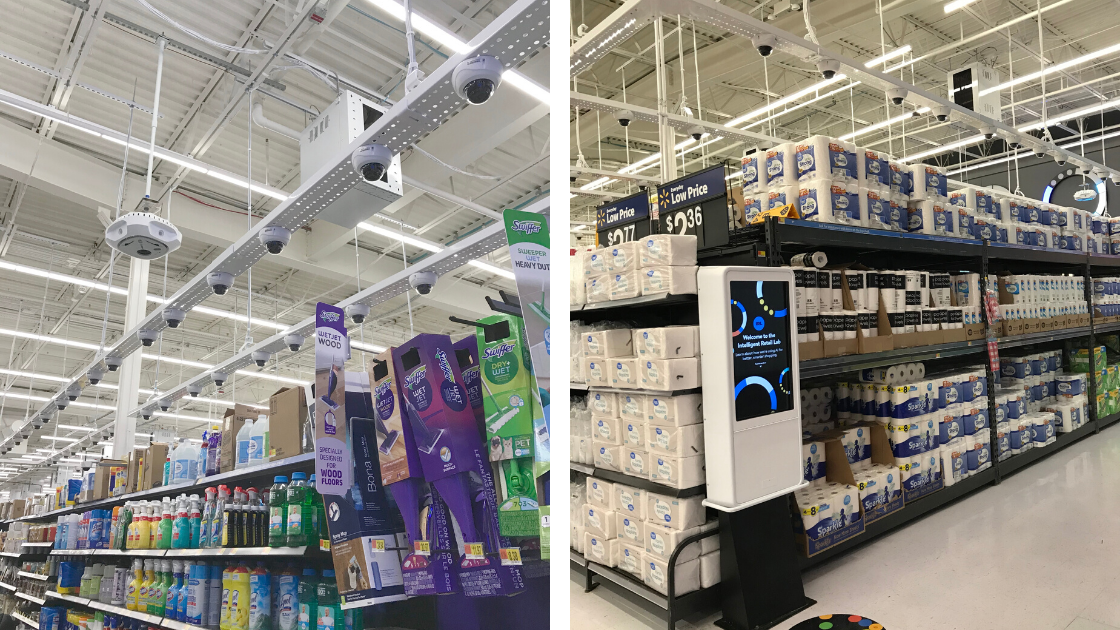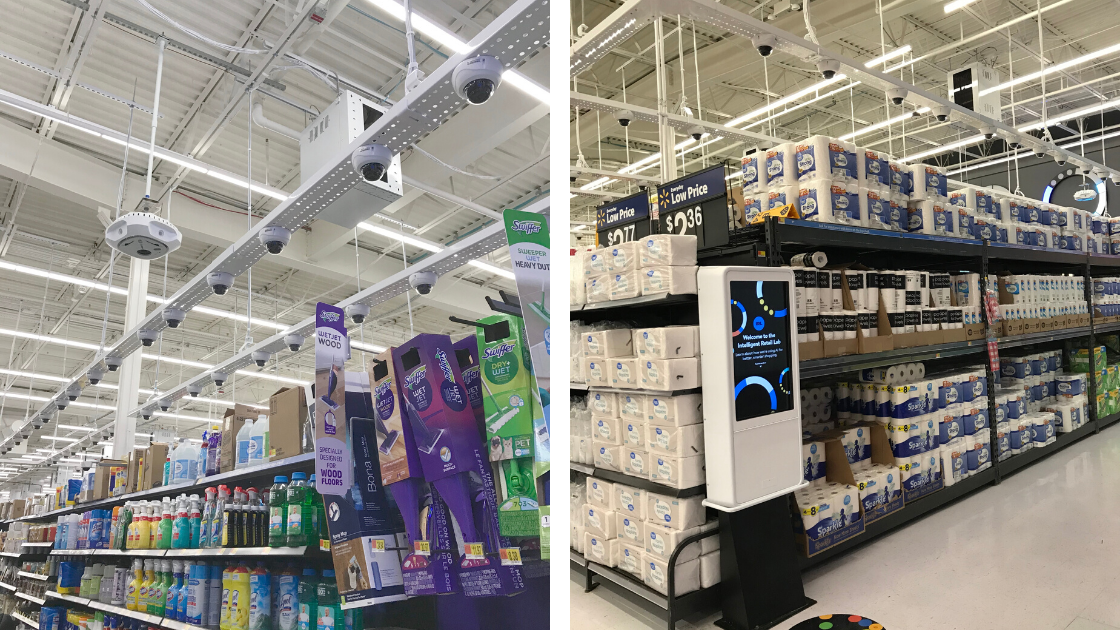By Lisa Chai, Senior Research Analyst, ROBO Global
I recently attended a private tour of Walmart's new intelligent research lab hosted by Tech2025, a think tank and growing community focused on exploring the most consequential emerging technologies that will impact our world in the next 10 years. The event promised to illustrate the future of retail and customer experience. It didn’t disappoint.
E-commerce has been disrupting the retail industry for years now. Finally, brick-and-mortar supermarkets are fighting back, and AI is at the heart of their battle for market share. From offering innovative in-store shopping experiences and online click-to-collect, to providing on-demand delivery services, retailers of all kinds are exploring new solutions that use AI to multiply fulfillment strategies, increase customer satisfaction, and compete in a world that is driven by technology.
Following Amazon’s purchase of Whole Foods, many grocers scrambled to hold on to their market share by moving to e-commerce or adopting technology as a defensive move. Walmart was among the first grocery chains to push the boundaries of e-commerce, purchasing Jet.com for $3.3B and completing its massive rollout of Bossa Nova robots in many of its stores. Bossa Nova’s inventory robots have now been rolled out at 350 Walmart stores in the US, and Walmart plans to add 650 more by year-end. Bossa Nova and Carnegie Mellon University recently partnered to provide real-time, on-shelf product data by using the latest deep learning algorithms, making it the largest deployment of this kind of technology in any retailer. The six-foot-tall autonomous robot is designed to scan the shelves looking for missing items—a major challenge for many retailers, even when using top-of-the-line supply chain logistics software and other best practices. Walmart is definitely on a mission to use the latest technology available to be defensive against companies like Amazon while also improving store productivity.
RELATED: OCADO Reimagining the Future of Online Grocery
At the day-long ‘field trip,’ Walmart engineers invited attendees inside its AI-powered retail store in Long Island to see first-hand how technology is being applied to power a best-in-class shopping experience. An in-store AI lab called Intelligent Retail Lab (IRL) is the place where Walmart is putting state-of-the-art hardware and software technologies to the test to uncover the true potential of AI-powered retail and explore its ability to simplify the shopping experience and help Walmart build a next-generation store that uses AI to attract and retain a loyal customer base.

The 50,000-square-foot facility is a bona fide testing ground for some of today’s most innovative retail-focused technologies. The store boasts more than 1,000 cameras with machine vision technology, 150,000 feet of cabling for its data center, weighted-shelf technology, and a slew of AI software that’s used to help process the huge quantity of data that is constantly gathered throughout the store. AI-enabled cameras gauge the ripeness of produce, monitor product availability on the shelf, and even recognize spills and quickly alert store workers to ensure quick cleanup. Store-wide product intelligence software and ‘smart shelves’ with weight sensors help identify when products have been moved and misplaced by shoppers, and cameras measure product depth to determine how many items are on a shelf at any given time. The store is also beta testing at least a dozen smart RFID scanners by ROBO Global index member Zebra Technologies. Best known for bar-code labels used to tag everything from apparel to patients in the hospitals, Zebra’s RFID equipment is one of the most advanced tools available for real-time inventory tracking. According to Zebra’s CTO Tom Bianculli, having full shelves at the right time can increase sales by up to 20%. At Walmart’s IRL, this data and more is processed in the data center in the back of the store using an impressive collection of servers, each equipped with the latest GPU processors to keep the lab running smoothly 24/7.
Customer experience is the #1 priority
Interestingly, compared to the futuristic feel of the most recent version of the Amazon Go store, Walmart’s in-store experience is far less impressive. However, it’s clear that Walmart has put its focus on pure practicality. Instead of focusing on slick design features, Walmart’s efforts have been directed solely on applying innovative technologies to handle its more than 30,000 SKUs and testing to see what works best for customers in real-time. In contrast, Amazon Go stores are currently processing just 1,000 SKUs, and the experience itself can be challenging for non-tech-savvy shoppers. (It seems not every shopper wants to use a mobile app simply to enter a store.) Walmart sees IRL as a true concept store—a place to discover what technologies support customer preferences and comfort levels, what technologies are most effective at optimizing and increasing store efficiencies, and much more.
That learning-based approach seems to be paying off. While the meat aisle had been highlighted as a challenging area in the past, new wifi-enabled cameras with real-time data have helped to increase sales by 30%, and the ability to efficiently stock items on the shelf—by over 90%—has helped to reduce spoilage and waste. Walmart’s engineering team explained that the store has added 30 additional workers to the original 100 to meet increased foot traffic with higher conversion rates.
There’s no question that Walmart’s mission isn’t to serve shoppers that prefer a digital experience, like what is offered by retailers like ROBO Global index member Ocado Group in the UK, or who are seeking a check-out-free shopping experience like what can be found at Amazon Go. Instead, Walmart is striving to improve the brick-and-mortar experience for traditional Walmart customers. Its key focus is to make sure products are in-stock, ensure perishable items are fresh, and guarantee its customers are happy. Of course, with over 11,000 stores worldwide, protecting its turf and improving its margins are also at the top of the list. The company has already become a big player in online grocery with its Pickup grocery service, which is available in ~3,000 stores in the US and is free with a $30 minimum purchase. The company plans to add to this successful program with a new fulfillment technology called Alert Innovation.
Walmart isn’t the only one…
Walmart’s IRL is a potential game-changer, but it’s certainly not alone in its quest to use new technology to enhance the in-store experience for grocery shoppers. In the last 12 months, Kroger has ramped up its omnichannel capabilities by building out automated warehouses powered by Ocado. The company has invested in using cutting-edge technology from Ocado to transform its fulfillment center, entirely changing its business model. Called “the shed,” the warehouses use proprietary robotic technology to fulfill online grocery orders, extending Kroger’s reach into new markets where the retailer doesn’t have stores. Ocado’s online grocery fulfillment center features hundreds of robots zooming around a grid at speeds of 10-15 feet per second and using robotic grippers to pick up and transport bins of grocery items. Ocado estimates that its system saves an hour of labor for every 50 items ordered by its customers.
Overall, US consumers have yet to fully embrace online grocery shopping. Currently, less than 5% of US grocery spending takes place online—a paltry number compared to other retail categories like footwear, toys, and electronics. Thanks to these new innovations, however, grocery is projected to be the fastest-growing category of e-commerce over the next few years according to the latest UBS report, and according to eMarketer, online revenue from US grocery e-commerce is expected to exceed $20B and to grow by more than 18% year-over-year.
There is little doubt that online fulfillment and omnichannel are the future of grocery retailers. As online grocery penetration grows, retailers will have no choice but to follow in the footsteps of Walmart, Amazon, and Kroger and embrace new consumer spending habits. Evolution has become the new grocery mandate, using robots, AI-powered warehouses, and smart stores to deliver a better, more efficient customer experience. With the rise of e-commerce, consumers expect mobile technology, speed, and convenience at every retail experience. The neighborhood grocery store is finally ready to answer the call.





